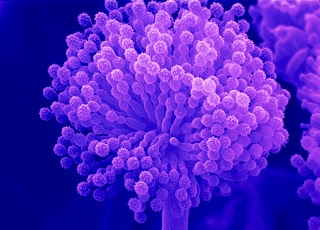An introduction to the structure of the bacterial cell

Bacterial identification in the diagnostic laboratory versus taxonomy.
Taxonomic characterization of bacteria. Approaches to rapid diagnosis


Anaerobic and aerobic metabolism. Metabolism of sugars and fatty acids


Structure and synthesis of the cell walls of gram-positive and gram negative bacteria


The mode of action of beta-lactam antibiotics


The mode of action of antibacterial chemotherapeutic agents. Antibiotic susceptibility
testing. The mechanisms by which bacteria express resistance to antibiotics


The general composition and structure of bacteriophage.
The infectious process and the lytic multiplication cycle.
The lysogenic cycle and its regulation

The mechanisms of gene transfer in bacteria. The nature of transposable
genetic elements and plasmids. The significance of gene transfer, transposable
genetic elements and plasmids


The structure and transcription of bacterial genes. The molecular mechanisms
that bacteria use to regulate gene activity. Inducible and repressible operons.
The molecular mechanisms involved in catabolite repression and attenuation.
The ways bacteria regulate enzyme activity


Exotoxins and endotoxins, transmission, adhesion, immunopathology


Enterobacteriaceae, Vibrio, Campylobacter and Helicobacter



Groups A, B and D streptococcus, pathogenesis, diagnosis


Streptococcus and pneumonia, Staphylococcus infections, food poisoning, toxic shock


Syphilis, Lyme disease, leptospirosis, gonorrhea, meningitis


Clostridia, gas-gangrene, tetanus, botulism, pseudomonads


Mycobacterial diseases: tuberculois, Legionaires' disease, diphtheria, leprosy


Listeria, Francisella, Brucella, Bacillus and Yersinia Plague, Anthrax, Brucellosis, Listeriosis

Whooping cough, Hib disease

The morphological and physiological characteristics of the mycoplasmas.
Pathogenesis of mycoplasma infections. Clinical syndromes associated with
and the epidemiology, diagnosis and treatment of mycoplasma infections

Developmental cycle of chlamydia. Pathogenesis, epidemiology and clinical
syndromes associated with chlamydia.

Interactions of the Rickettsia, Ehrlichia, Coxiella and Bartonella with the host cell. Pathogenesis, epidemiology and clinical syndromes associated with Rickettsia, Ehrlichia, Coxiella and Bartonella. Methods for treatment, prevention and control of rickettsial diseases.

Credits: University of South Carolina School Of Medicine



